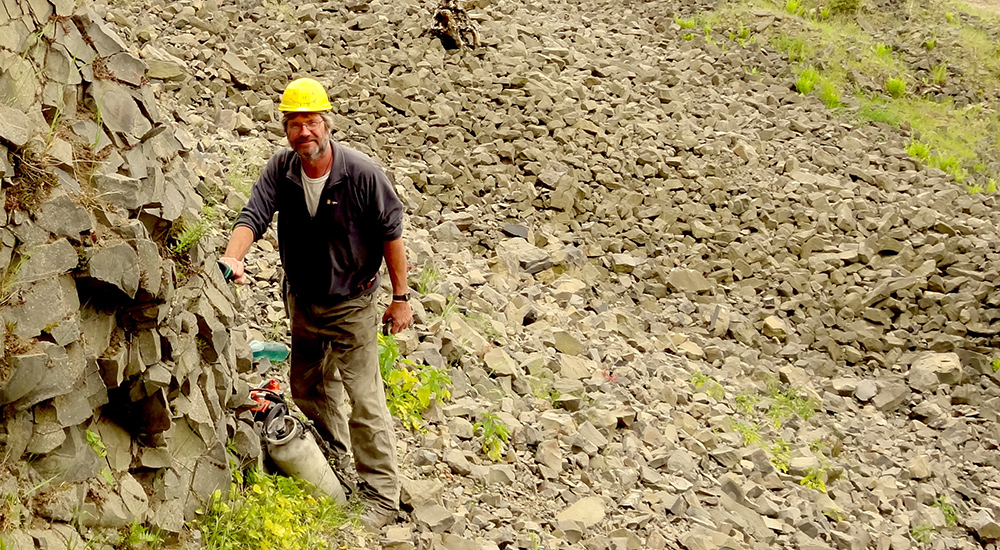
Courtesy photo. Highlands geology professor Michael Petronis coauthored a published paper that will help people understand complex earth science concepts.
LAS VEGAS, NM – The general public may more easily understand complex earth science processes thanks to the work of a Highlands researcher and his colleagues around the globe.
Highlands geology professor Michael Petronis, along with 17 earth scientists from Europe, the Americas, Africa and Oceana published an article in the December issue of the journal Global and Planetary Change outlining a proposal to create universal visual graphics to help simplify earth science concepts.
“We’re trying to open up earth sciences to larger audiences,” Petronis said. “We want to engage people with their environment and instill an appreciation for where they live.”
The scientists’ work encompasses broad perspectives on earth sciences, living and non-living, from the earth’s core to extraterrestrial influences on the earth. The team is creating a library of visual images that people from different walks of life can readily understand earth processes like plate tectonics, climate, and global history.
“We came at it from cosmology to the atomic scale,” Petronis said. “It’s scientists outreaching to society and opening the doors to let people wonder what’s out there.”
Petronis said he hopes the visual explanations of earth science processes would also help stir the same curiosity in today’s children he had when he was young.
“The backyard of my house growing up in Ohio was a swamp,” Petronis said. “I would go out and explore the woods and a nearby abandoned quarry and cliffs. I was always asking ‘why.’ A visual system like this would have been helpful. The rocks I looked at were part of the deltaic system. If I would have had a picture of a mountain with a river forming a delta in an inland sea, it would have put the system into context.”
Petronis said geologist Benjamin van Wyk de Vries from the Université Clermont Auvergne in France thought of the idea of a universal visual explanation and shared it with Petronis while van Wyk de Vries was at Highlands through the university’s Visiting Ballen Scholar program.
The two scientists have collaborated on geologic fieldwork research in France, the Czech Republic, and the Canary Islands. They also established an international exchange program in 2011 that has given geology students from both Highlands and Université Clermont Auvergne the opportunity to conduct field and laboratory research onsite in France and New Mexico under their supervision.
“Dr. Petronis has worked hard on establishing international relationships that not only benefit our students here at Highlands but, as in the case of this publication, are helping to promote knowledge and scientific understanding to people around the world without an earth science background,” said Highlands President Sam Minner.
Petronis said the next step for the group will be to field test the visual concept to people in different countries from all walks of life.
“We need to see if this makes sense,” he said.
Petronis said he hopes to one day see universal visualizations used at geoheritage sites and National Parks around the world.
“In national parks like the Sierra Nevada, you could have a sign that talks about the complex geology in words,” Petronis said, “but if we can provide people with a visual explanation, it might stick with them.”
